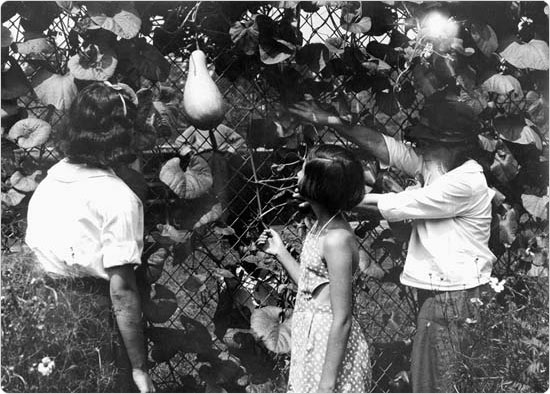History of Community Gardens
Find information about GreenThumb community gardens at the GreenThumb webpage.
When Frederick Law Olmsted and Calvert Vaux designed and oversaw the building of Central and Prospect Parks in the 19th century, the idea that members of the community could decide what to plant there would have been inconceivable. After all, the democratic ideals that guided the landscape architects revolved around educating the masses about art and beauty, not receiving input from the public. The spirit of community gardening would have been as foreign to 19th century designers as a community board meeting, public hearing, or design review process. But as society moved towards a progressive view that relied on government to ameliorate social ills as well as valuing community input, the objective of parks adapted and the citizens themselves have come to play more of a role in programming and designing their own open spaces.
In the early 20th century, open spaces began to be used not only for rest and recreation but also to foster a sense of ownership and community. From the early examples of Farm Gardens to the community garden movement that started in the late 1960s and early 1970s, private citizens began a hands–on experiment in caring for the city's open spaces. In this "user–generated" era of social networking and Wikipedia, it's helpful to conceive of community gardens and gardening as a kind of "user–generated park," a revolution in that it made the public responsible for the design and operation of open spaces. Gone were the days where one experienced in one afternoon the "big art work of the Republic" (as Vaux called Central Park), enjoying a controlled experience from Grand Army Plaza up through the Ramble to Belvedere Castle—in other words, an almost prescribed way to interact with a park. In the user–generated era, parkgoers rolled up their sleeves and went to work, no longer merely "patronizing" a park.
